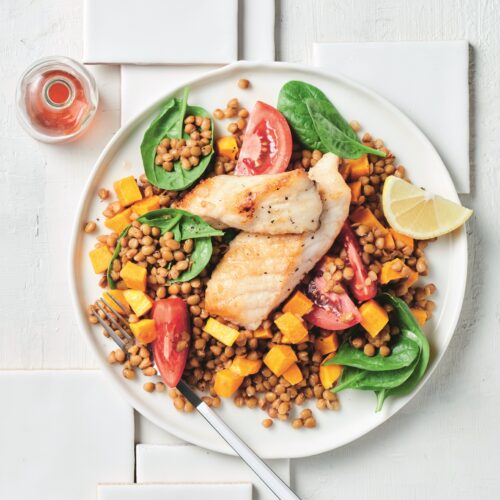
Having a kitchen garden is a great way to save money and enjoy a year-round supply of fresh fruit and vegetables.
How much space do I need?
A vege garden for a family can be as simple as a few pots on a balcony or as grand as a large plot. For a regular supply of veges, you only need an area a few metres square. Work with what you've got.
What sort of site do I need?
Vege gardens do best when they get lots of sun, especially in winter when it's cooler. So pots or plot, try and find a spot where the sun shines and it's not too windy.
What tools do I need?
- Basic tools: spade, fork, rake, trowel and secateurs or scissors.
- Useful optional tools: hoe, wheelbarrow.
- Other equipment: watering can or hose and plastic pots in various sizes (use recycled punnets from the kitchen).
Getting started
Once you've found your spot, check the soil. If it's sandy (feels gritty in your hands) or clay (can be rolled into a ball) it will need a bit of work before you can plant your veges. Sandy soil needs compost added to enrich it and give it structure. Clay soil needs to be broken up and lightened with compost, manure and gypsum or lime.
An easier option is to start a raised bed. Use wood, railway sleepers or garden edging to build up a frame. Line your rasied bed with thick layers of newspaper, and fill it with garden mix from the garden centre. This is ready-made to plant your veges in, and will work in pots, too.
What to plant?
Different types of vegetables can be planted all year round. In winter, things will grow more slowly than in summer, and in colder parts of New Zealand, the very cold winter months can make growing things a challenge. There's a huge range of climates around the country, so if you're just starting a garden, ask around local gardeners or your garden centre to find out what will work best for you. If you get very cold frost where you live, you may decide to wait until spring weather rolls around.
Seeds or seedlings?
Seedlings are a good option for beginner gardeners, being pretty foolproof. Seeds are cheaper and worth trying as you get more confident. You can start seeds off in small pots in a sheltered spot or greenhouse, then transfer the plants to the garden once they're big enough.
For a 4-person household
| WINTER (plant April-August) |
SUMMER (plant September-January) |
|---|---|
| Start with 6 plants of each, and plant a few more every 2-3 weeks for a regular supply: broccoli cabbage cauliflower lettuce (especially 'cut-and-come again' types) radishes silver beet spinach |
Start with 6 plants of each, and plant a few more every 2-3 weeks for a regular supply: broccoli mesclun lettuce beetroot spinach
|
| Plant 1 or 2 plants: parsley coriander chives thyme mint fennel
|
Plant 4 or 5 of each to last the season. Mix up varieties so different types are ready at different times: tomatoes celery courgettes capsicums chillies cucumbers basil beans |
| Plant 2-3 rows: Jerusalem artichokes Garlic |
Plant 2-3 rows of different types: potatoes corn |
Garden tips
- Start out with a plan for your vege garden, so you know what to buy and where it's going to go.
- Only grow veges you like to eat. If you're a family of spinach haters, there's no point having an abundance of it in the garden.
- Keep a record of what you've planted where, or mark the rows so you know what's a plant and what's a weed!
- Pile compost, grass clippings or commercial mulch around seedlings to help them retain moisture and deter weeds.
- Practice crop rotation: plant different crops in each spot each year, so the soil has the chance to recover.
- If you grow something you really love, save some of the seeds for planting next season.
www.healthyfood.com










